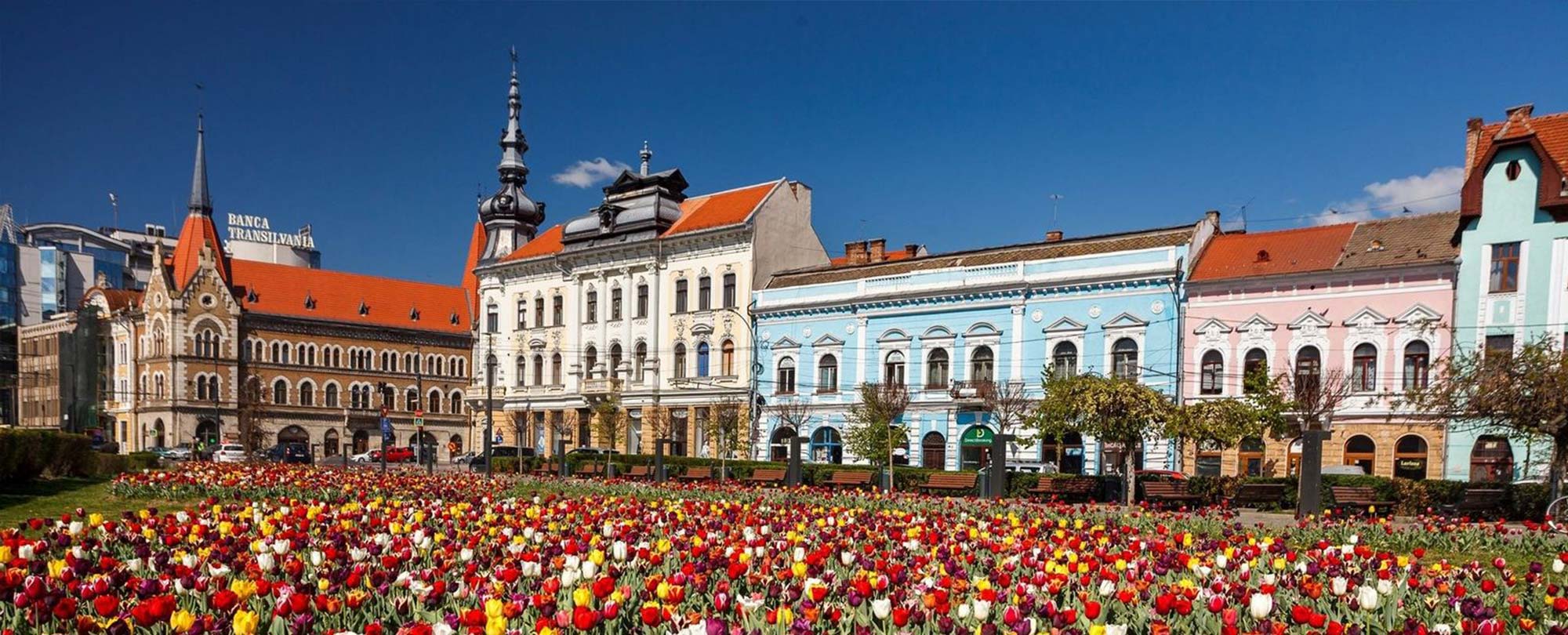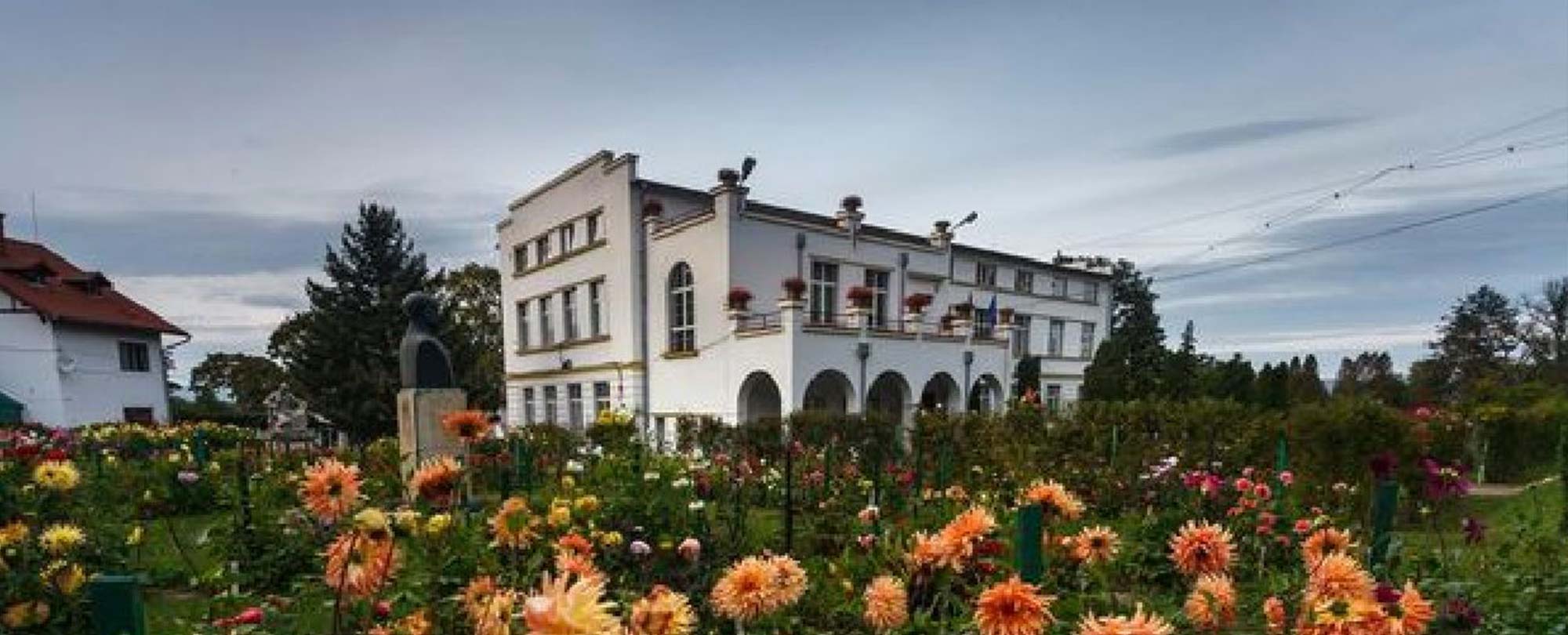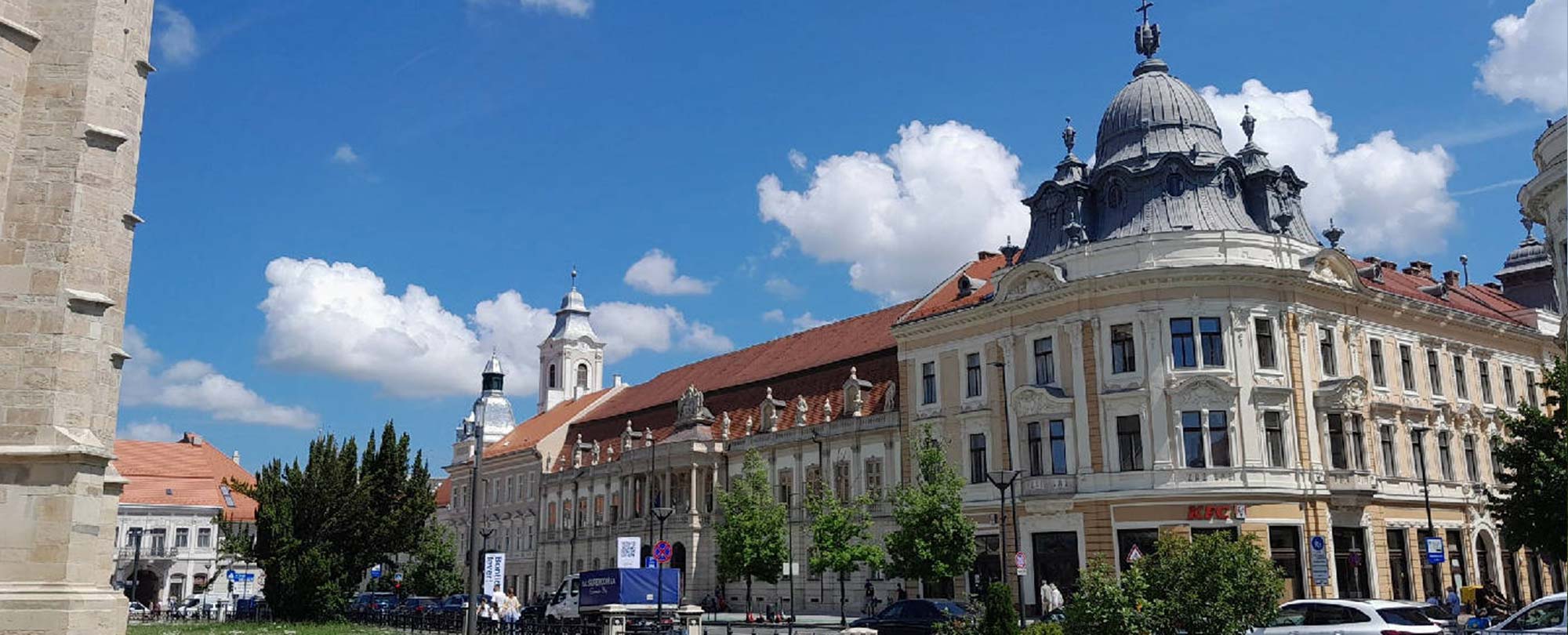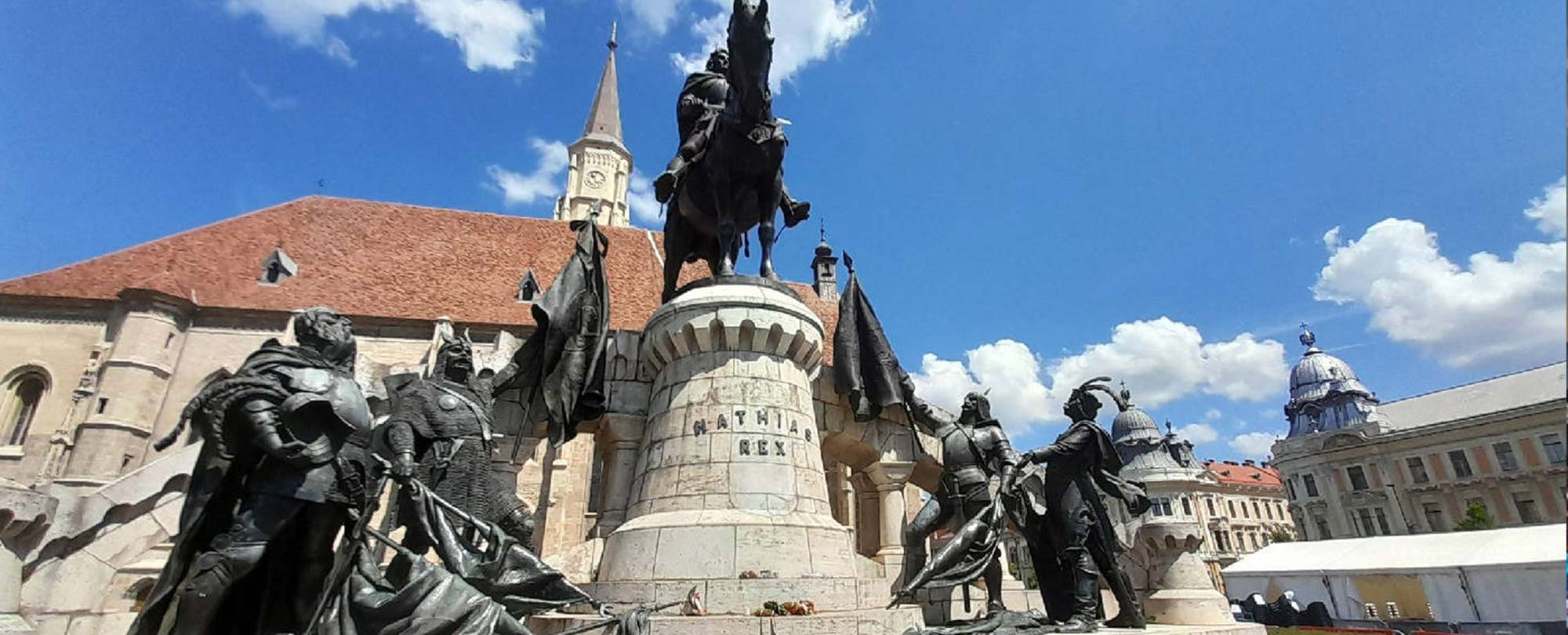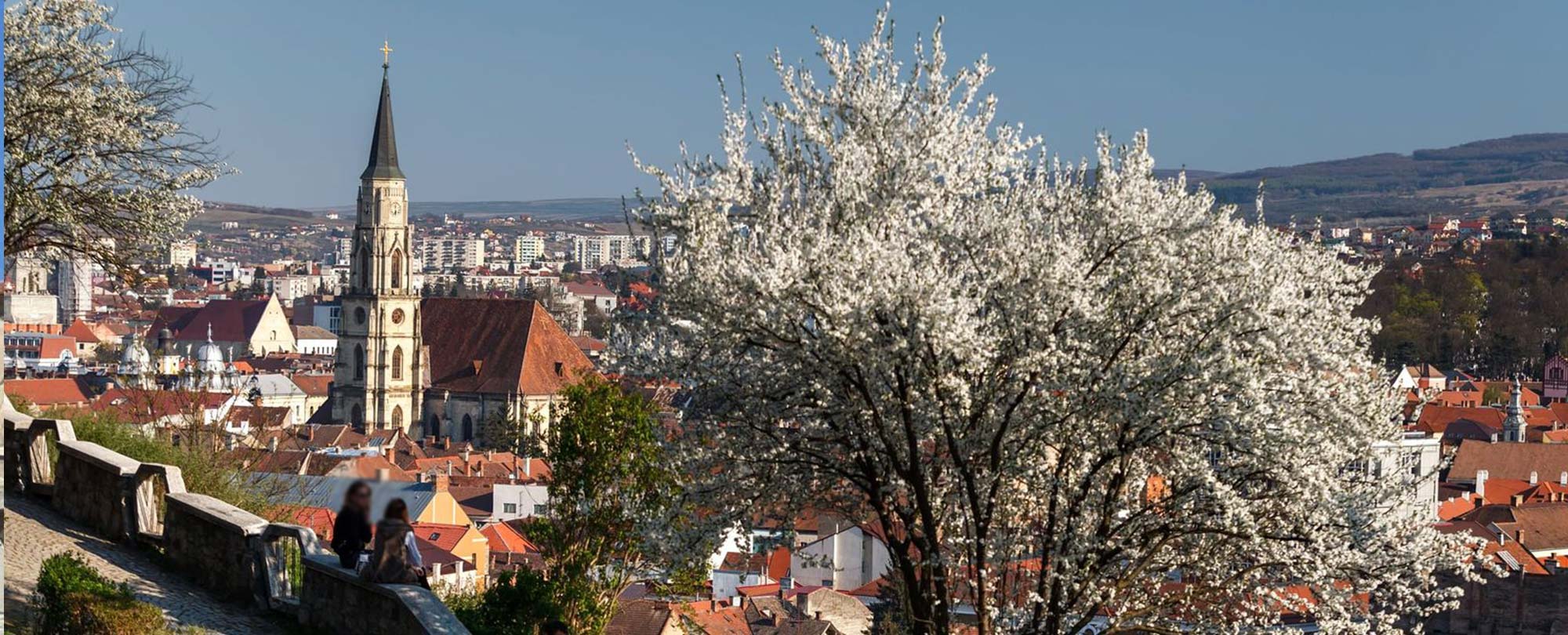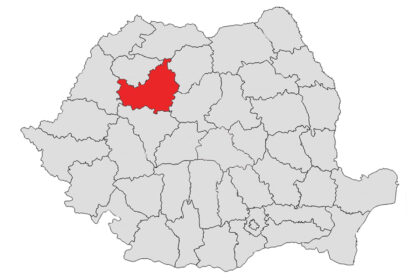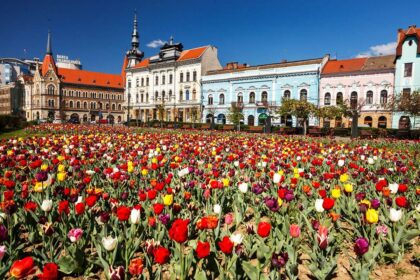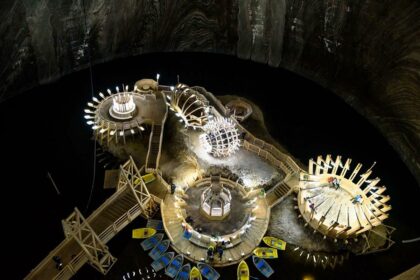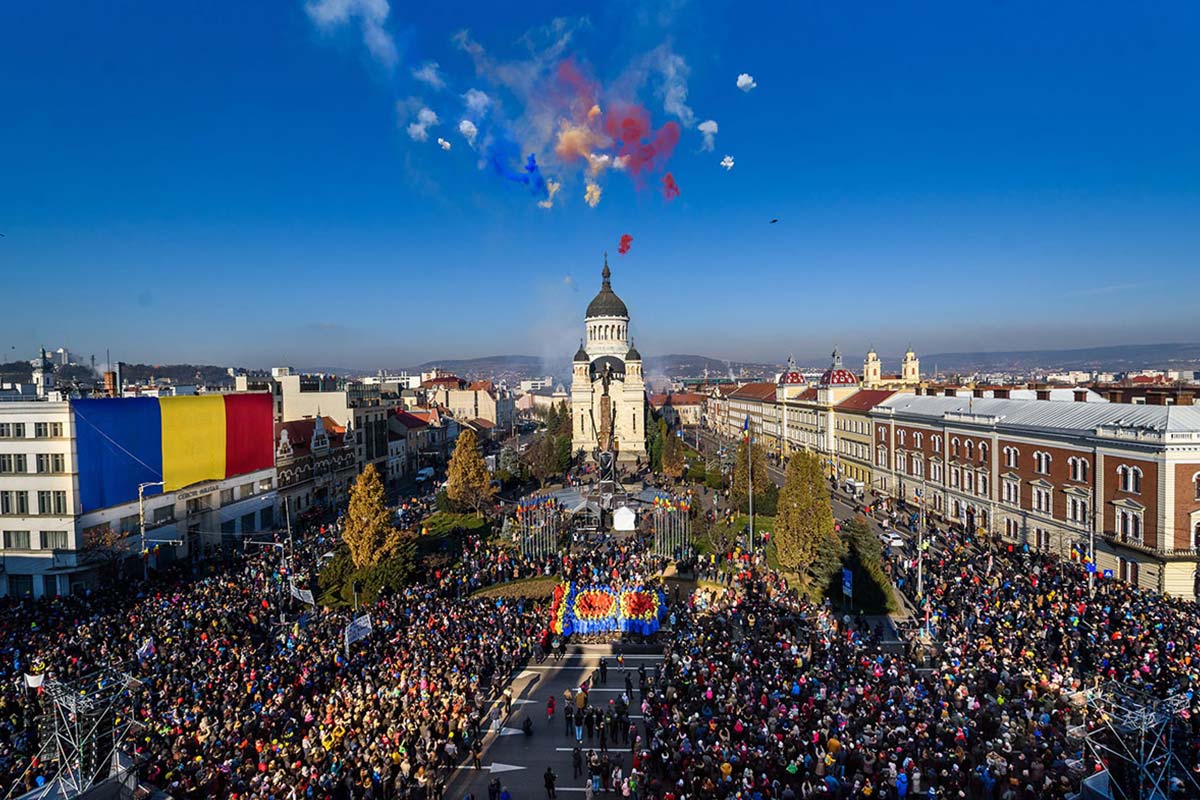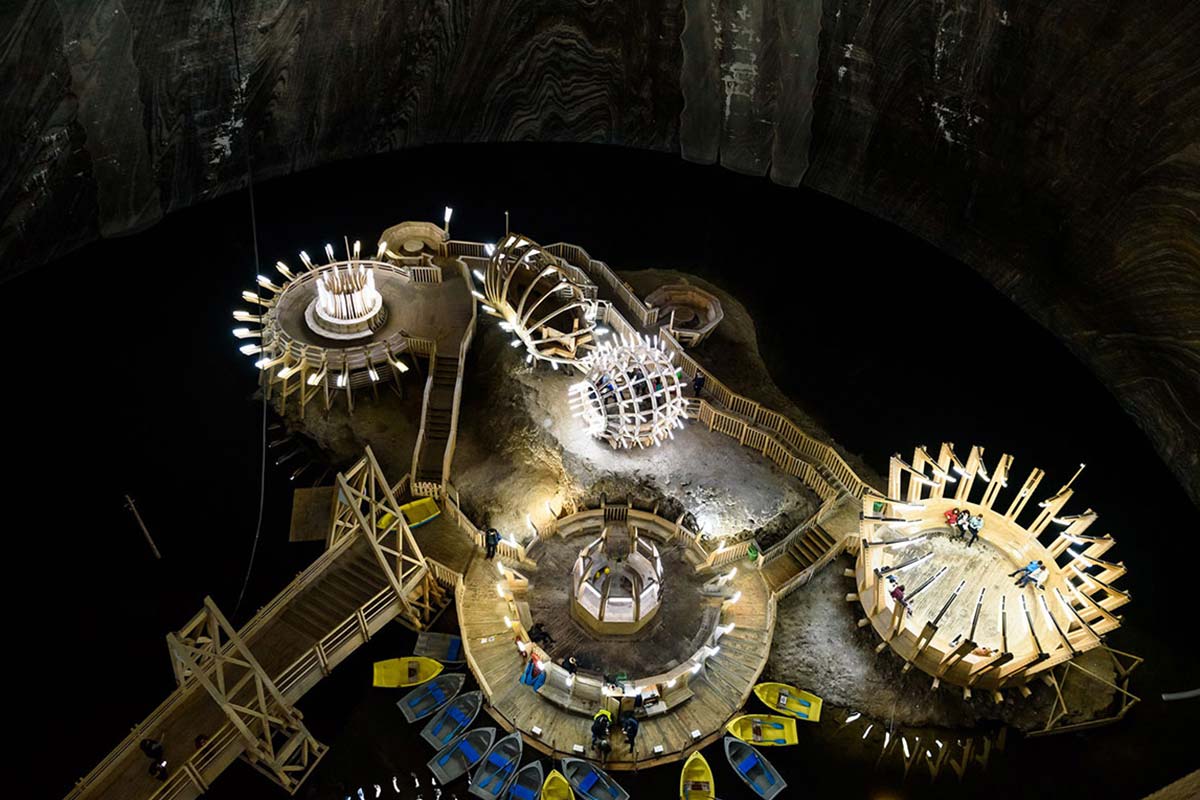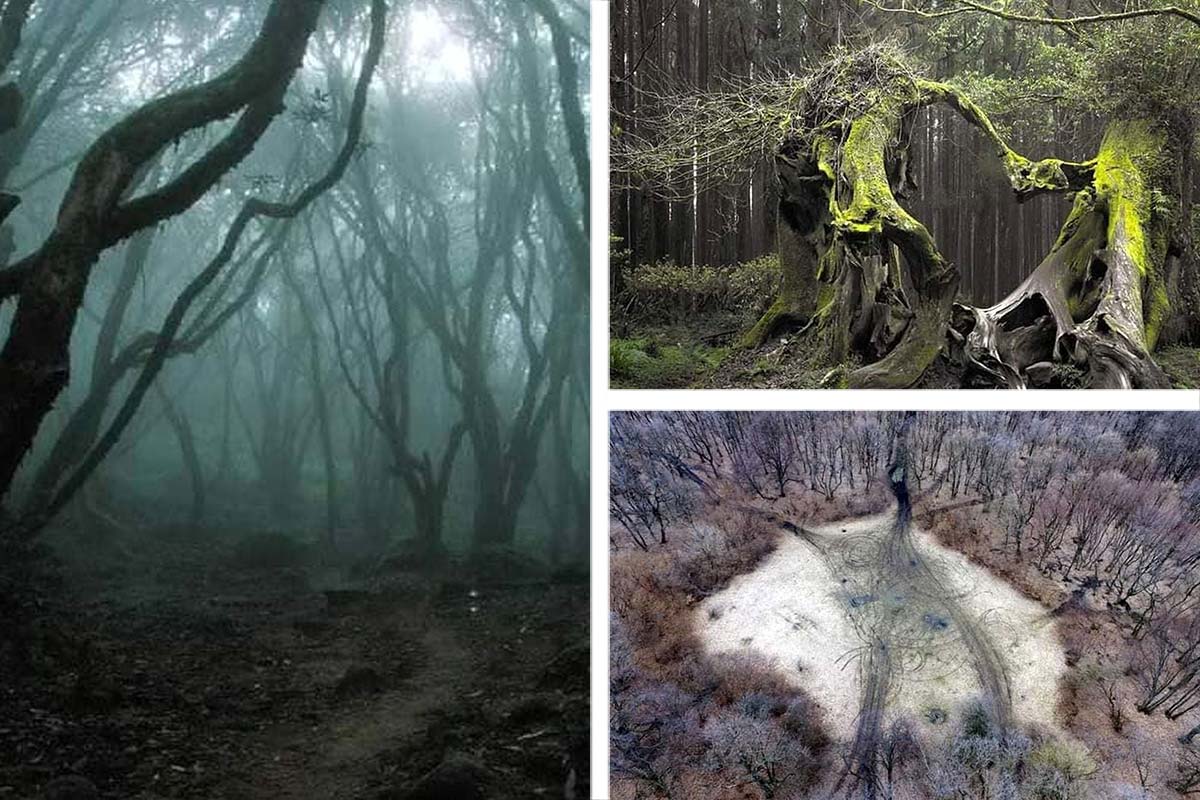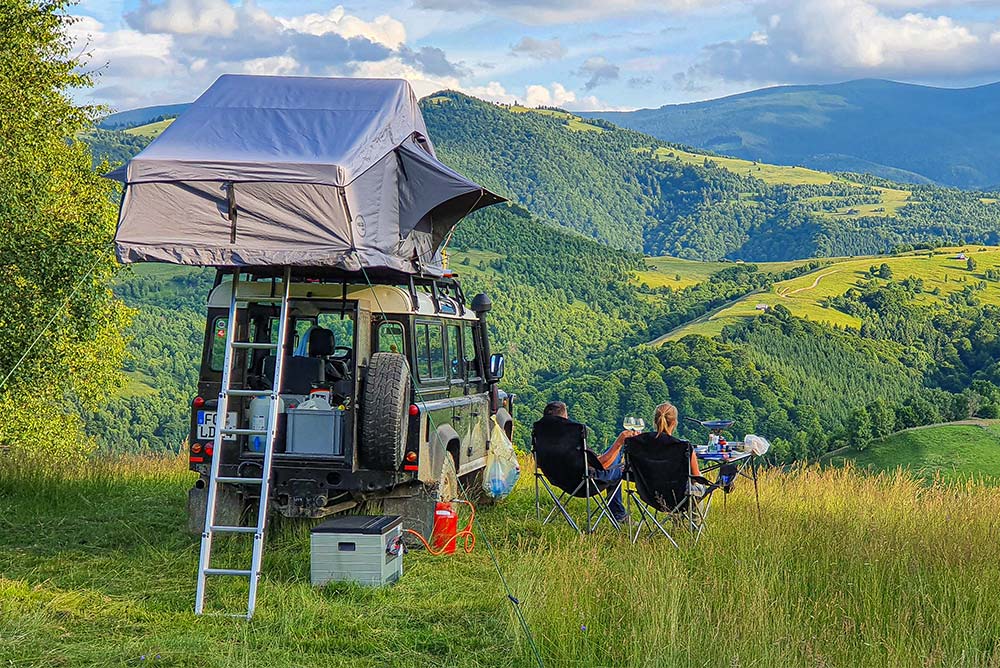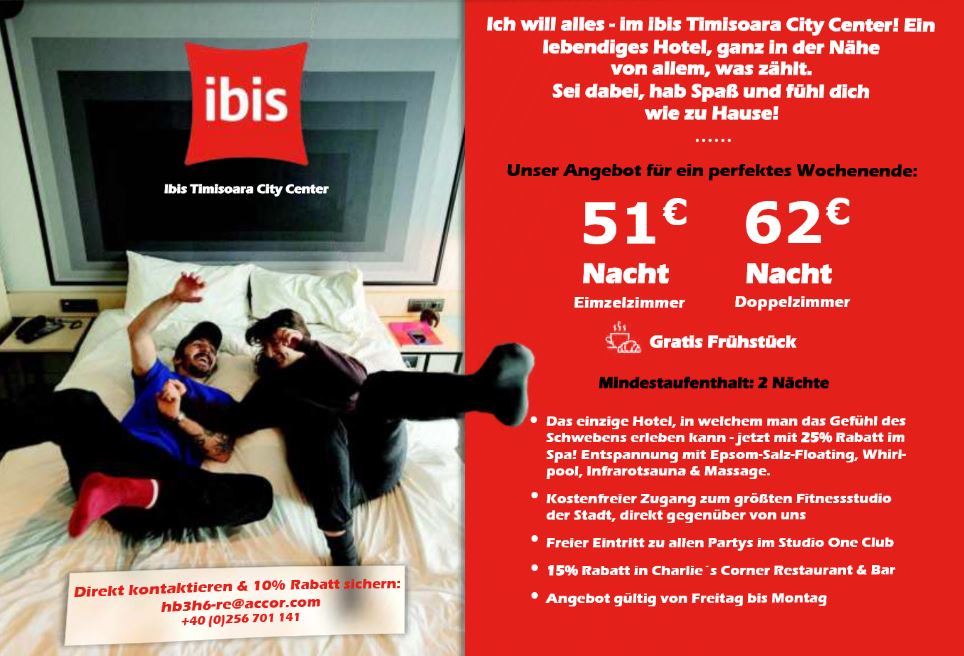Cluj County (Cities: Cluj-Napoca, Turda, Dej)
Cluj is a Romanian county in the Transylvania region with the capital of the Cluj-Napoca district (Klausenburg in German). The common abbreviation and registration number is CJ. Cluj County borders Maramureș County to the north, Bistrița-Năsăud and Mureș County to the east, Alba County to the south, Bihor County to the west and Sălaj County to the northwest.
Facebook PostsView all Facebook posts!
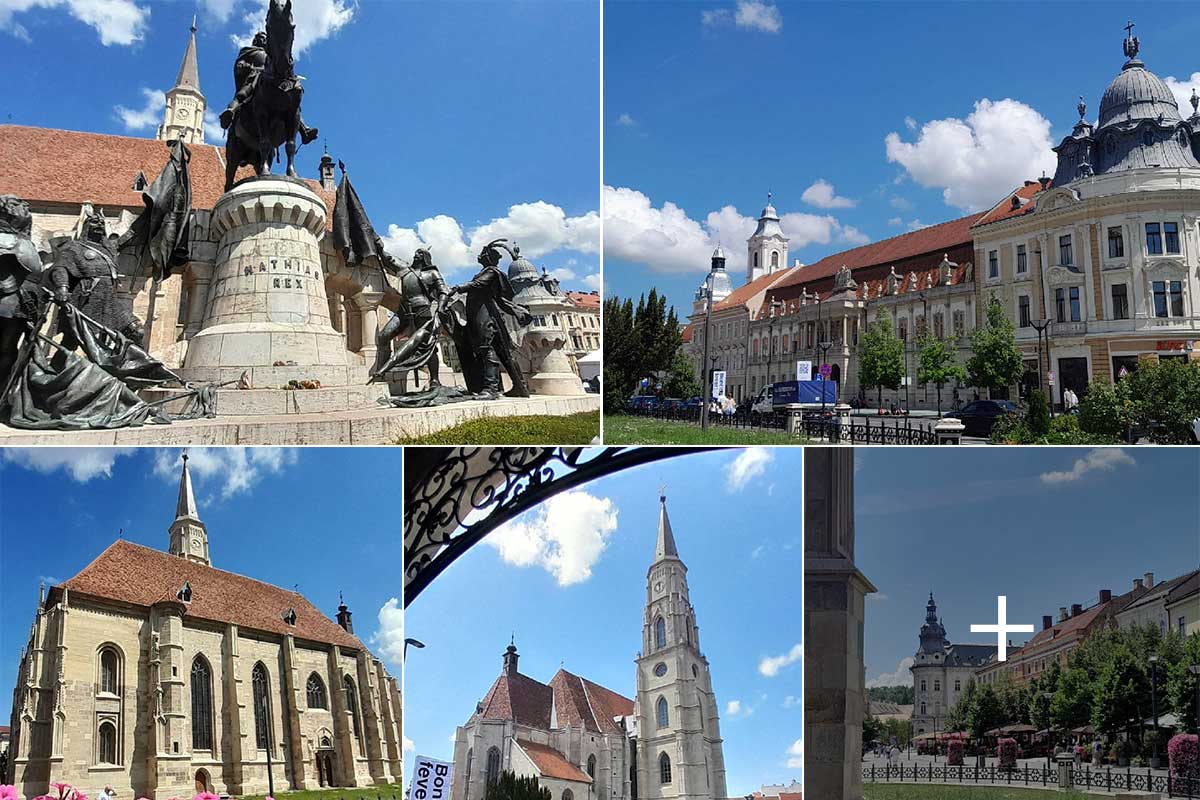
Cluj-Napoca | Impressions
(23 June 2025)
X

Cluj-Napoca | Impressions
(23 June 2025)
Pictures of Cluj-Napoca (in German Klausenburg, in Hungarian Kolozsvar) from June 29 and 30. The city is (probably*) the second largest city in Romania and the capital of Cluj County in Transylvania.
With a population of around 400,000, Cluj-Napoca is the unofficial capital of the Transylvania region. There are universities, a lively nightlife and many buildings from the times of Hungarian and Saxon rule. Around the main square Piata Unirii are the Gothic St. Michael's Church and an equestrian statue of King Matthias Corvinus, who lived in the 15th century. The baroque Banffy Palace is now a museum displaying Romanian art.
With a population of around 400,000, Cluj-Napoca is the unofficial capital of the Transylvania region. There are universities, a lively nightlife and many buildings from the times of Hungarian and Saxon rule. Around the main square Piata Unirii are the Gothic St. Michael's Church and an equestrian statue of King Matthias Corvinus, who lived in the 15th century. The baroque Banffy Palace is now a museum displaying Romanian art.

Story(ies): Samuel von Brukenthal
(12 June 2025)
X

Story(ies): Samuel von Brukenthal
(12 June 2025)
Samuel von Brukenthal ( born in 1721, died 1803 ) was one of the most important personalities of Transylvania.
He studied administrative sciences, history, philosophy and theology in Germany. His professional career in administration began with his marriage to the daughter of the mayor of Sibiu ( Sibiu ). His professional duties took him to Vienna in 1753, where he met the famous Empress Maria Teresa, who became his supporter and friend. He spent many years in the Viennese court and was governor of Transylvania between 1777 and 1787. He was the only Transylvanian Saxon to ever rule this country.
https://palatulbrukenthalavrig.ro/
It was influenced by the ideas of the European Enlightenment at the time. He was a passionate collector, interested in art, coins, books, minerals and plants. Under the influence of his stay in Vienna, he built his summer residence in Avrig on the model of the imperial palace in Schönbrunn!
Master Mircea Codrea made for Brukenthal Palace a copy of Brukenthal's portrait in the same size as the original, which can be seen in the Orangeria restaurant above the fireplace.
Brukenthal Palace is looking forward to your visit!
He studied administrative sciences, history, philosophy and theology in Germany. His professional career in administration began with his marriage to the daughter of the mayor of Sibiu ( Sibiu ). His professional duties took him to Vienna in 1753, where he met the famous Empress Maria Teresa, who became his supporter and friend. He spent many years in the Viennese court and was governor of Transylvania between 1777 and 1787. He was the only Transylvanian Saxon to ever rule this country.
https://palatulbrukenthalavrig.ro/
It was influenced by the ideas of the European Enlightenment at the time. He was a passionate collector, interested in art, coins, books, minerals and plants. Under the influence of his stay in Vienna, he built his summer residence in Avrig on the model of the imperial palace in Schönbrunn!
Master Mircea Codrea made for Brukenthal Palace a copy of Brukenthal's portrait in the same size as the original, which can be seen in the Orangeria restaurant above the fireplace.
Brukenthal Palace is looking forward to your visit!

Fairytale images of the forest of Craiului | Apuseni Mountains
(11 June 2025)
X

Fairytale images of the forest of Craiului | Apuseni Mountains
(11 June 2025)
Dense and untouched forests, narrow gorges and steep valleys, caves, hundreds of kilometers of marked trails, churches, waterfalls, tradition & local specialties, and so much more.
When you see the first picture, you might think it’s Bavaria... or Austria!? But it’s Romania! It’s the Padurea Craiului (Forest of Rocks) in the Apuseni Mountains*.
*The Apuseni Mountains are a mountain formation in western Romania. They reach peak heights of 1,100 to 1,800 meters and form the northern section of the Western Romanian Carpathians.
Source: Destinatia Anului
When you see the first picture, you might think it’s Bavaria... or Austria!? But it’s Romania! It’s the Padurea Craiului (Forest of Rocks) in the Apuseni Mountains*.
*The Apuseni Mountains are a mountain formation in western Romania. They reach peak heights of 1,100 to 1,800 meters and form the northern section of the Western Romanian Carpathians.
Source: Destinatia Anului
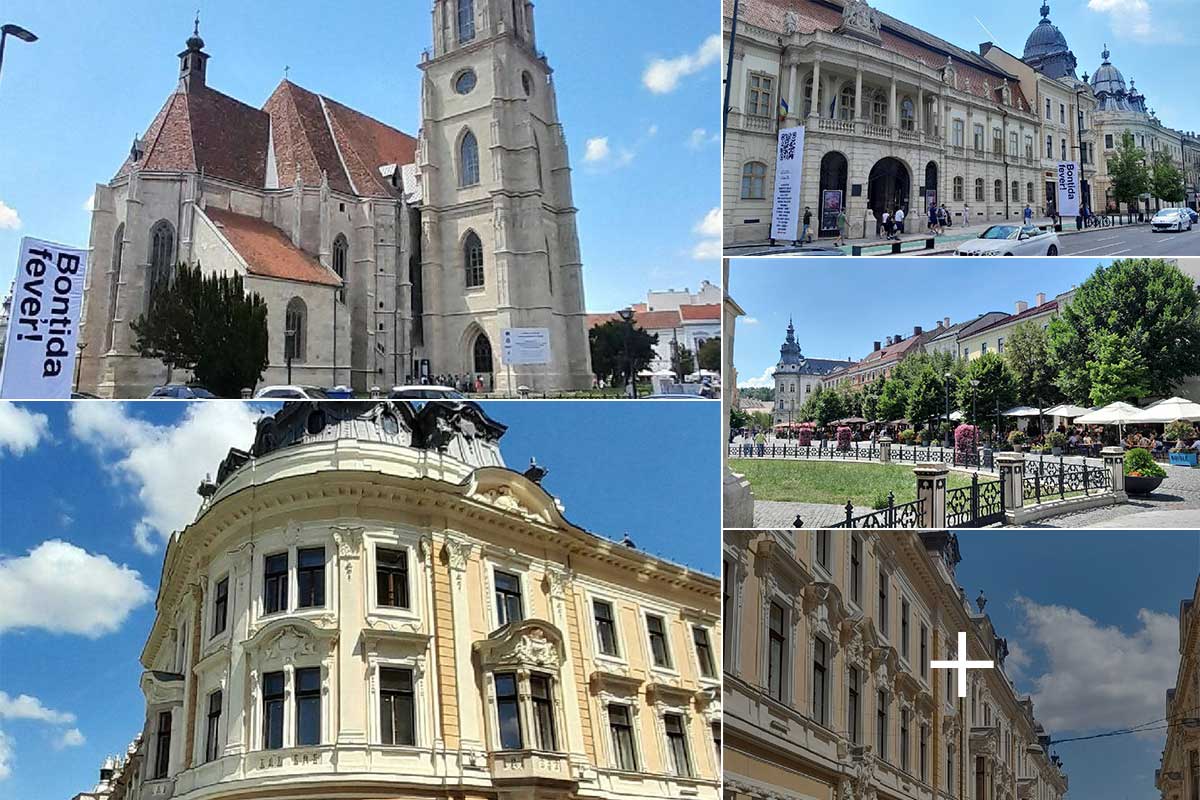
Cluj-Napoca | Impressions end of June 2024
(09 June 2025)
X

Cluj-Napoca | Impressions end of June 2024
(09 June 2025)
Pictures of Cluj-Napoca (in German Klausenburg, in Hungarian Kolozsvar) from June 29 and 30. The city is (probably*) the second largest city in Romania and the capital of Cluj County in Transylvania.
With a population of around 400,000, Cluj-Napoca is the unofficial capital of the Transylvania region. There are universities, a lively nightlife and many buildings from the times of Hungarian and Saxon rule. Around the main square Piata Unirii are the Gothic St. Michael's Church and an equestrian statue of King Matthias Corvinus, who lived in the 15th century. The baroque Banffy Palace is now a museum displaying Romanian art.
With a population of around 400,000, Cluj-Napoca is the unofficial capital of the Transylvania region. There are universities, a lively nightlife and many buildings from the times of Hungarian and Saxon rule. Around the main square Piata Unirii are the Gothic St. Michael's Church and an equestrian statue of King Matthias Corvinus, who lived in the 15th century. The baroque Banffy Palace is now a museum displaying Romanian art.
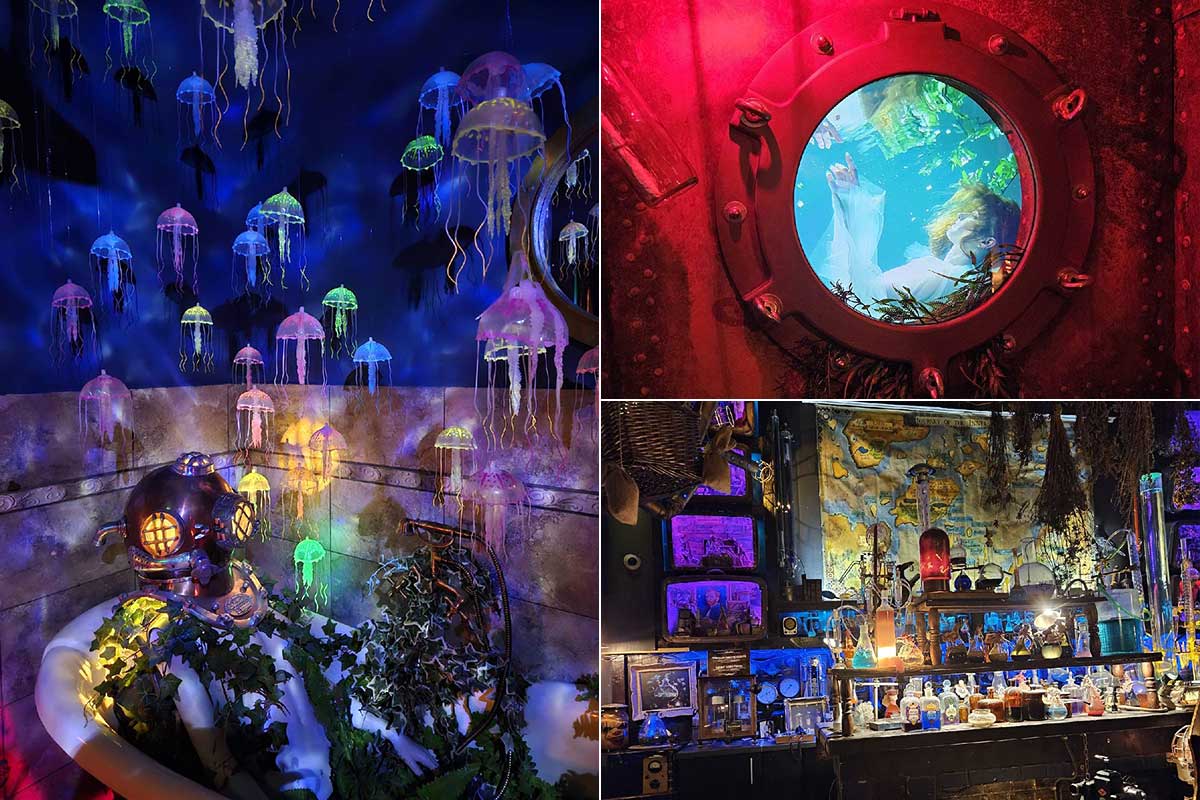
Museum ‘Steampunk Transylvania’ in Cluj-Napoca
(31 May 2025)
X

Museum ‘Steampunk Transylvania’ in Cluj-Napoca
(31 May 2025)
Discover a realm where the mystical and reality merge in the city of Cluj-Napoca, nestled in the heart of Transylvania.
Visit the Steampunk Museum right in the city centre.
Find out more: Steampunk Transylvania
We would like to thank Julia ( instagram.com/jules_the_municorn ) for sending us these pictures.
Visit the Steampunk Museum right in the city centre.
Find out more: Steampunk Transylvania
We would like to thank Julia ( instagram.com/jules_the_municorn ) for sending us these pictures.

Pictures from the WEEKEND | Turda Salt Mine | Cluj County
(26 May 2025)
X

Pictures from the WEEKEND | Turda Salt Mine | Cluj County
(26 May 2025)
A weekend from a year ago and we are happy to be able to show these pictures. The Turda Salt Mine is located in the town of the same name in Cluj County, southeast of the city of Cluj-Napoca.
We thank Mr. Camille Feller and his wife, Katja Feller, for sending these wonderful pictures and for allowing us to use them 😊 Thank you 🥰
We thank Mr. Camille Feller and his wife, Katja Feller, for sending these wonderful pictures and for allowing us to use them 😊 Thank you 🥰
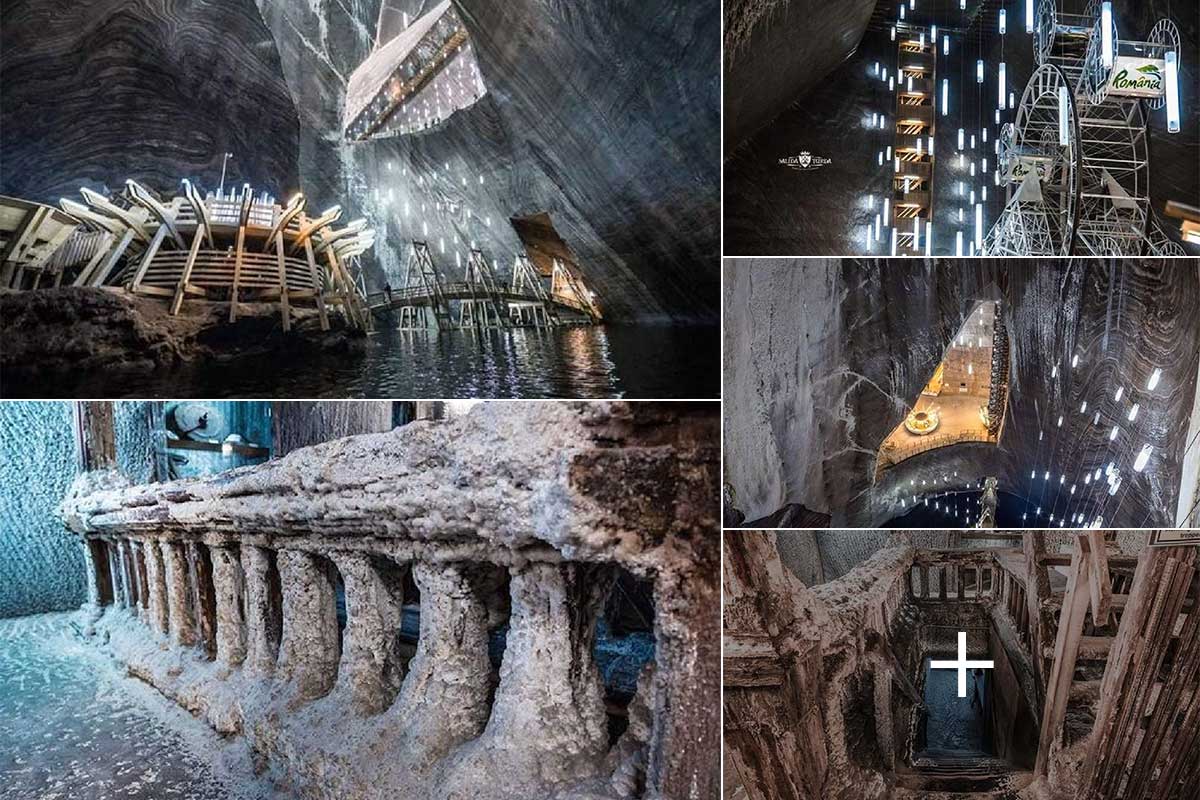
Turda Salt Mine | Cluj County
(22 May 2025)
X

Turda Salt Mine | Cluj County
(22 May 2025)
Always a pleasure: The Turda Salt Mine is a true museum of the history of salt mining. It is located in the city of Turda, which is in Cluj County.
The temperature in the salt mine is constantly between 10-12 degrees. It is one of the oldest and most famous salt mines in Transylvania / Romania.
More salt mines and information in Romania:
https://willkommen-in-rumänien.de/#Salzbergwerke
We thank Destinatia Anului for allowing us to use these pictures: https://destinatiaanului.ro/
The temperature in the salt mine is constantly between 10-12 degrees. It is one of the oldest and most famous salt mines in Transylvania / Romania.
More salt mines and information in Romania:
https://willkommen-in-rumänien.de/#Salzbergwerke
We thank Destinatia Anului for allowing us to use these pictures: https://destinatiaanului.ro/
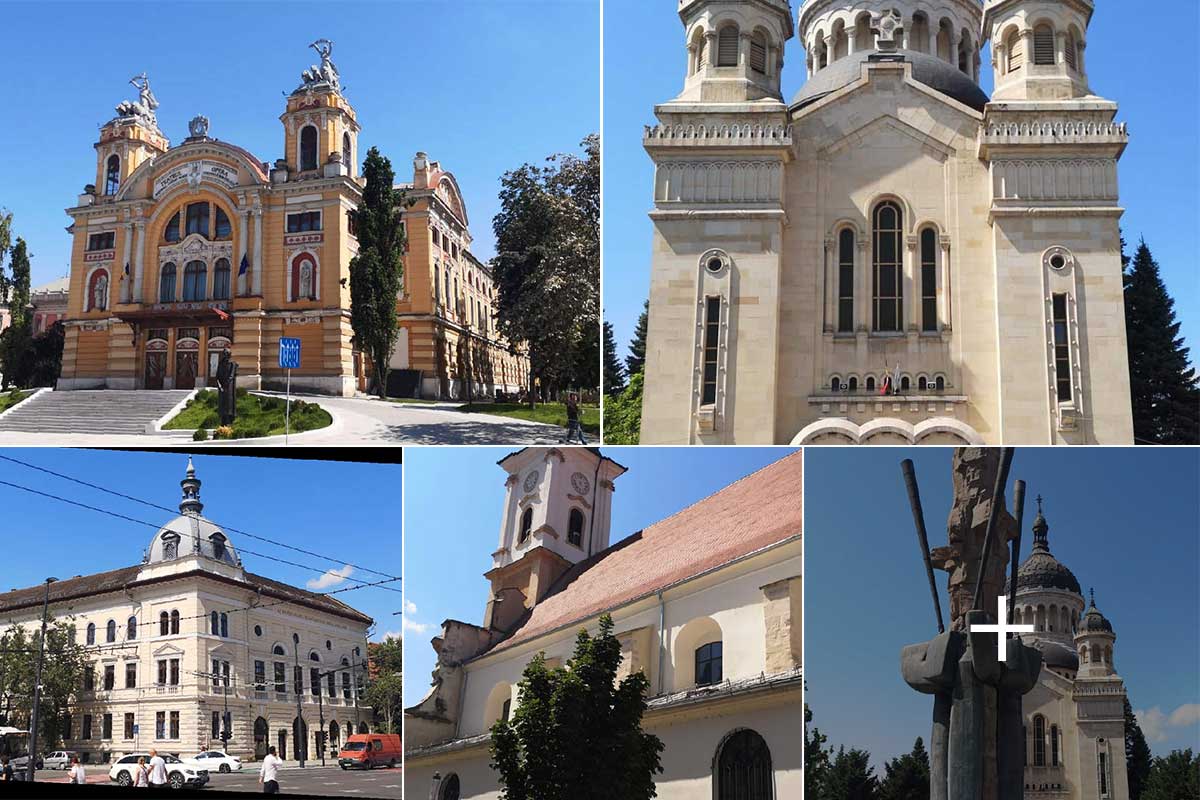
Cluj-Napoca | A city that never sleeps (Part 1 of 2)
(15 May 2025)
X

Cluj-Napoca | A city that never sleeps (Part 1 of 2)
(15 May 2025)
Pictures from the summer of 2023 from Cluj-Napoca (in German Klausenburg, in Hungarian Kolozsvar) the (probably*) second largest city in Romania and capital of the county of Cluj in Transylvania.
With a population of around 400,000*, Cluj-Napoca is the unofficial capital of the Transylvania region. There are universities, a lively nightlife and many buildings from the times of Hungarian and Saxon rule. Around the main square Piata Unirii are the Gothic St. Michael's Church and an equestrian statue of King Matthias Corvinus, who lived in the 15th century. The baroque Banffy Palace is now a museum displaying Romanian art.
Cluj-Napoca has an international airport and is located in the north-west of Romania.
We would like to thank Mr. Frank Schleßmann for sending us these beautiful pictures (photos from summer 2023) and his permission to use them.
* It may also be Iasi, Timisoara or Constanta. Unfortunately there are no exact numbers.
Translated with DeepL.com (free version)
With a population of around 400,000*, Cluj-Napoca is the unofficial capital of the Transylvania region. There are universities, a lively nightlife and many buildings from the times of Hungarian and Saxon rule. Around the main square Piata Unirii are the Gothic St. Michael's Church and an equestrian statue of King Matthias Corvinus, who lived in the 15th century. The baroque Banffy Palace is now a museum displaying Romanian art.
Cluj-Napoca has an international airport and is located in the north-west of Romania.
We would like to thank Mr. Frank Schleßmann for sending us these beautiful pictures (photos from summer 2023) and his permission to use them.
* It may also be Iasi, Timisoara or Constanta. Unfortunately there are no exact numbers.
Translated with DeepL.com (free version)
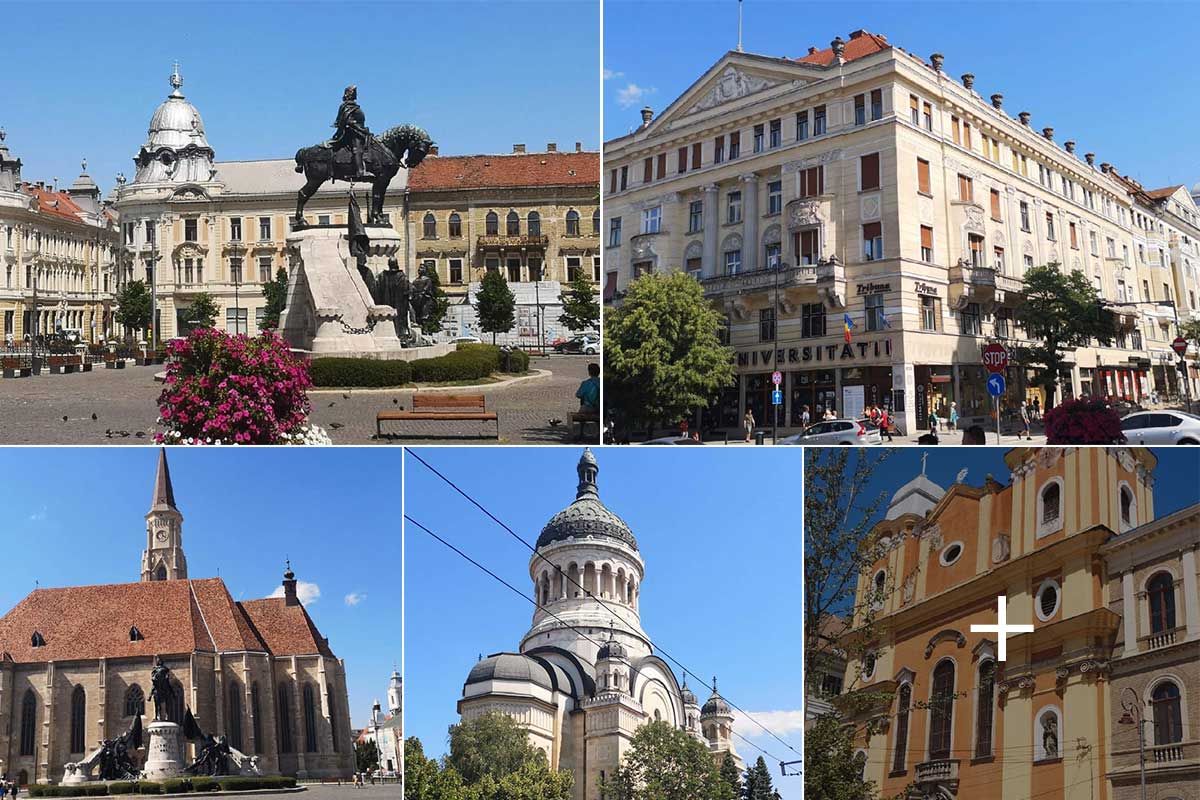
Cluj-Napoca | A city that never sleeps (Part 2 of 2)
(15 May 2025)
X

Cluj-Napoca | A city that never sleeps (Part 2 of 2)
(15 May 2025)
Pictures from the summer of 2023 from Cluj-Napoca (in German Klausenburg, in Hungarian Kolozsvar) the (probably*) second largest city in Romania and capital of the county of Cluj in Transylvania.
With a population of around 400,000*, Cluj-Napoca is the unofficial capital of the Transylvania region. There are universities, a lively nightlife and many buildings from the times of Hungarian and Saxon rule. Around the main square Piata Unirii are the Gothic St. Michael's Church and an equestrian statue of King Matthias Corvinus, who lived in the 15th century. The baroque Banffy Palace is now a museum displaying Romanian art.
Cluj-Napoca has an international airport and is located in the north-west of Romania.
We would like to thank Mr. Frank Schleßmann for sending us these beautiful pictures (photos from summer 2023) and his permission to use them.
* It may also be Iasi, Timisoara or Constanta. Unfortunately there are no exact numbers.
Translated with DeepL.com (free version)
With a population of around 400,000*, Cluj-Napoca is the unofficial capital of the Transylvania region. There are universities, a lively nightlife and many buildings from the times of Hungarian and Saxon rule. Around the main square Piata Unirii are the Gothic St. Michael's Church and an equestrian statue of King Matthias Corvinus, who lived in the 15th century. The baroque Banffy Palace is now a museum displaying Romanian art.
Cluj-Napoca has an international airport and is located in the north-west of Romania.
We would like to thank Mr. Frank Schleßmann for sending us these beautiful pictures (photos from summer 2023) and his permission to use them.
* It may also be Iasi, Timisoara or Constanta. Unfortunately there are no exact numbers.
Translated with DeepL.com (free version)
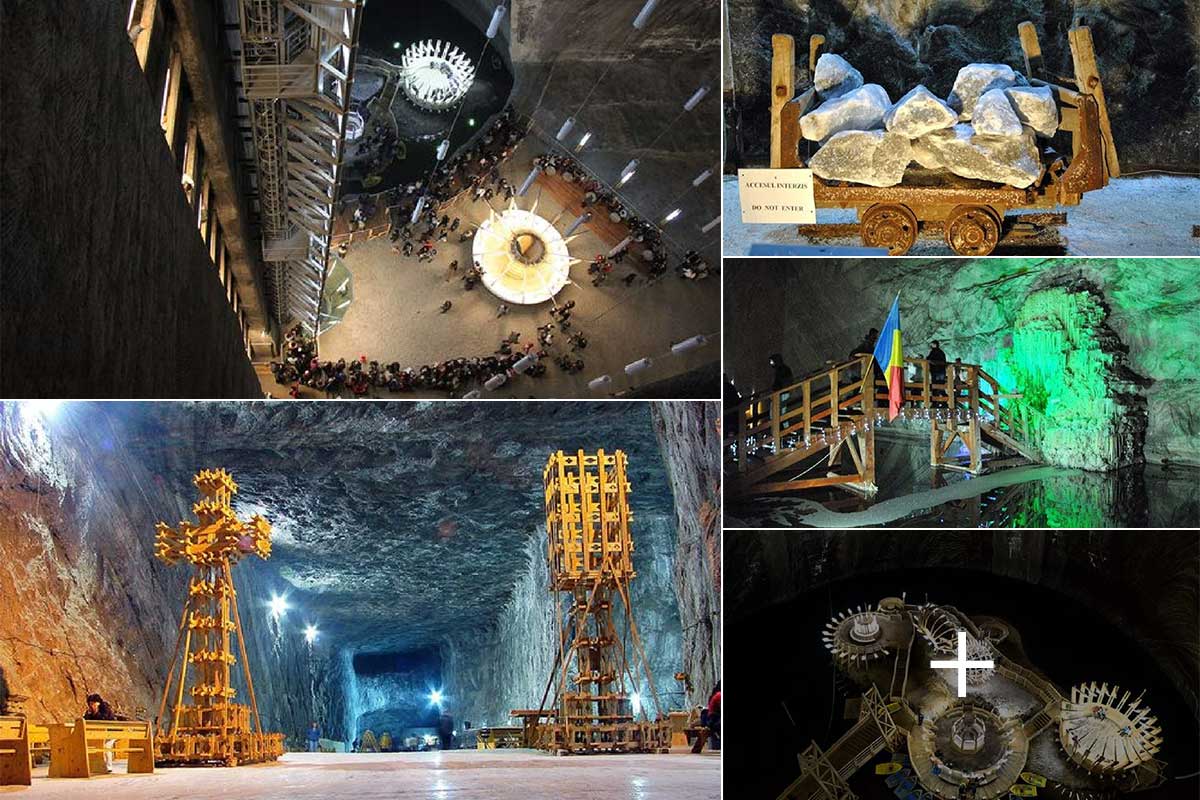
Salt mines: Turda | Slanic Prahova | Praid
(15 May 2025)
X

Salt mines: Turda | Slanic Prahova | Praid
(15 May 2025)
Romania has a large number of salt mines, which are mostly open to visitors throughout the year. It is a special experience for the whole family and definitely recommended as a trip.
Turda Salt Mine, Cluj County
https: / /xn--urlaub-in-rumnien-2qb.de/.../destinații de excursie ... /
Praid Salt Mine, Harghita County
https: / /xn--urlaub-in-rumnien-2qb.de/.../destinații de excursie ... /
Salina Slanic, Prahova County
https : //xn--urlaub-in-rumnien-2qb.de/.../destinații de excursie ... /
# Ocnele Mari Salt Mine, Valcea County
https://discover-valcea.com/en/ocnele-mari-salt-mine/
# Targu Ocna Salt Mine, Bacau County.
It is the third largest salt mine and one of the oldest salt mines in Romania. It is home to the Trotuș mine at a depth of 240 m, the country's largest facility for the treatment of respiratory diseases. The mine is also home to one of the few places of worship in Romania built in salt mines and dedicated to Saint Varvara. The salt mine is still used today for the extraction, processing and marketing of salt in Romania and abroad. Between 90,000 and 120,000 tons of salt are extracted every year.
Salina Targu Ocna is one of the oldest salt mines in Romania and is mentioned in documents dating back to 1502 and has been listed as a salt extraction area since at least 1353.
Turda Salt Mine, Cluj County
https: / /xn--urlaub-in-rumnien-2qb.de/.../destinații de excursie ... /
Praid Salt Mine, Harghita County
https: / /xn--urlaub-in-rumnien-2qb.de/.../destinații de excursie ... /
Salina Slanic, Prahova County
https : //xn--urlaub-in-rumnien-2qb.de/.../destinații de excursie ... /
# Ocnele Mari Salt Mine, Valcea County
https://discover-valcea.com/en/ocnele-mari-salt-mine/
# Targu Ocna Salt Mine, Bacau County.
It is the third largest salt mine and one of the oldest salt mines in Romania. It is home to the Trotuș mine at a depth of 240 m, the country's largest facility for the treatment of respiratory diseases. The mine is also home to one of the few places of worship in Romania built in salt mines and dedicated to Saint Varvara. The salt mine is still used today for the extraction, processing and marketing of salt in Romania and abroad. Between 90,000 and 120,000 tons of salt are extracted every year.
Salina Targu Ocna is one of the oldest salt mines in Romania and is mentioned in documents dating back to 1502 and has been listed as a salt extraction area since at least 1353.
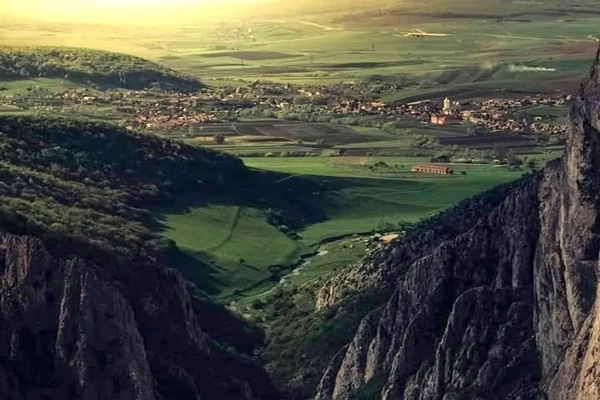
Turzii Gorges - german: Thorenburger Klamm
(06 May 2025)
X

Turzii Gorges - german: Thorenburger Klamm
(06 May 2025)
The Cheile Turzii (also known in German as Thorenburger Gorge) is a limestone canyon in the Trascău Mountains, located at the eastern edge of the Western Carpathians in western Transylvania, Romania, near the city of Turda (Thorenburg).
The approximately two-kilometer-long gorge is traversed by the Hășdate River, which has carved its way through the limestone. On both sides, the canyon is bordered by steep walls about 300 meters high, containing several caves. Since 1938, the gorge has been under nature protection due to the presence of over 1,000 plant species, some of them alpine. On an area of 176 hectares, around 70 species of birds, fish, amphibians, and some mammals such as foxes, weasels, martens, and wild boars live here.
Learn more about landscapes, nature, and attractions in Romania: https://xn--urlaub-in-rumnien-2qb.de/
We thank Vlad the Impaler - Dracula for the permission to use this picture.
The approximately two-kilometer-long gorge is traversed by the Hășdate River, which has carved its way through the limestone. On both sides, the canyon is bordered by steep walls about 300 meters high, containing several caves. Since 1938, the gorge has been under nature protection due to the presence of over 1,000 plant species, some of them alpine. On an area of 176 hectares, around 70 species of birds, fish, amphibians, and some mammals such as foxes, weasels, martens, and wild boars live here.
Learn more about landscapes, nature, and attractions in Romania: https://xn--urlaub-in-rumnien-2qb.de/
We thank Vlad the Impaler - Dracula for the permission to use this picture.
We thank Vlad the Impaler - Dracula for the permission to use this image(s)
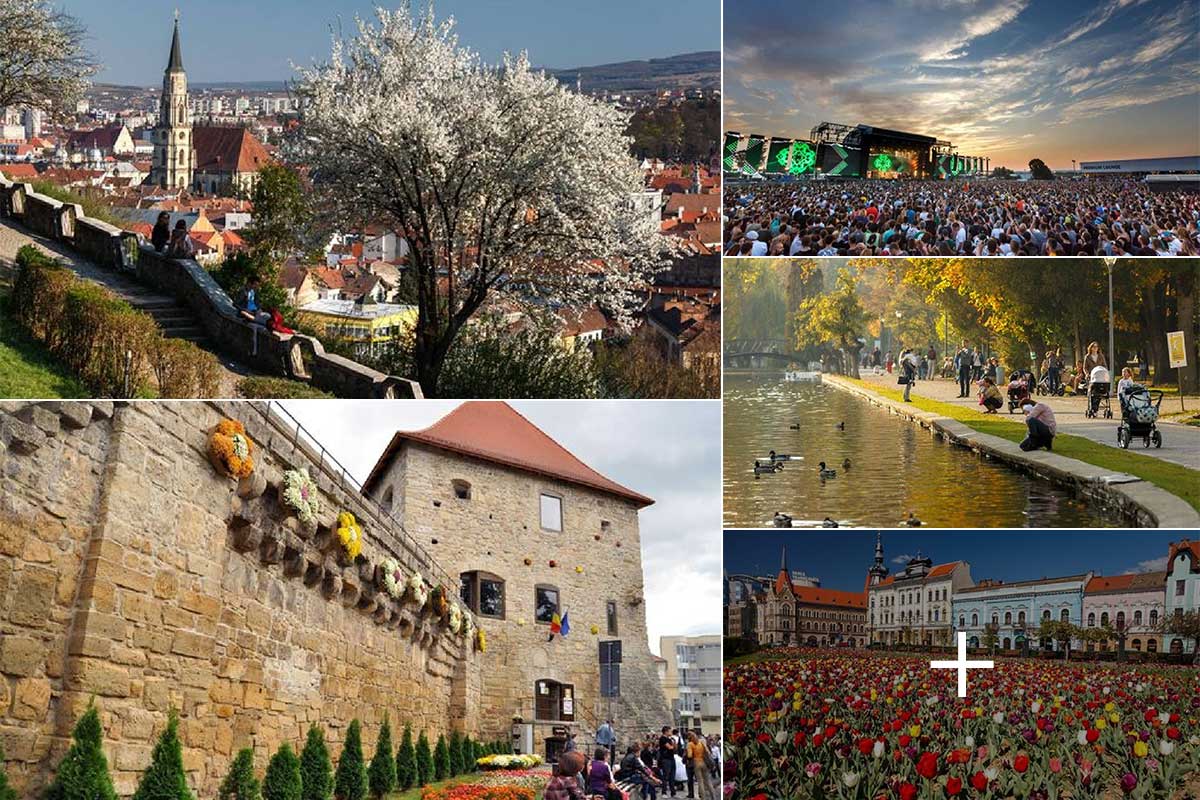
Cluj-Napoca | A city that never sleeps
(26 April 2025)
X

Cluj-Napoca | A city that never sleeps
(26 April 2025)
Cluj-Napoca (in German Klausenburg, in Hungarian Kolozsvár) is (probably*) the second largest city in Romania and the capital of Cluj County in Transylvania.
https://welcome-to-romania.com | https://urlaub-in-rumänien.de
Cluj-Napoca, with about 400,000 inhabitants, is the unofficial capital of the Transylvania region. The city has universities, a vibrant nightlife, and many buildings from the times of Hungarian and Saxon rule. Around the main square, Piata Unirii, are the Gothic St. Michael’s Church and an equestrian statue of King Matthias Corvinus, who lived in the 15th century. The baroque Banffy Palace is now a museum displaying Romanian art.
Cluj-Napoca has an international airport and is located in northwestern Romania.
* It could also be Iasi or Timisoara or ... !? Unfortunately, there are no exact figures.
We thank the city of Cluj-Napoca for allowing us to use these pictures.
https://welcome-to-romania.com | https://urlaub-in-rumänien.de
Cluj-Napoca, with about 400,000 inhabitants, is the unofficial capital of the Transylvania region. The city has universities, a vibrant nightlife, and many buildings from the times of Hungarian and Saxon rule. Around the main square, Piata Unirii, are the Gothic St. Michael’s Church and an equestrian statue of King Matthias Corvinus, who lived in the 15th century. The baroque Banffy Palace is now a museum displaying Romanian art.
Cluj-Napoca has an international airport and is located in northwestern Romania.
* It could also be Iasi or Timisoara or ... !? Unfortunately, there are no exact figures.
We thank the city of Cluj-Napoca for allowing us to use these pictures.
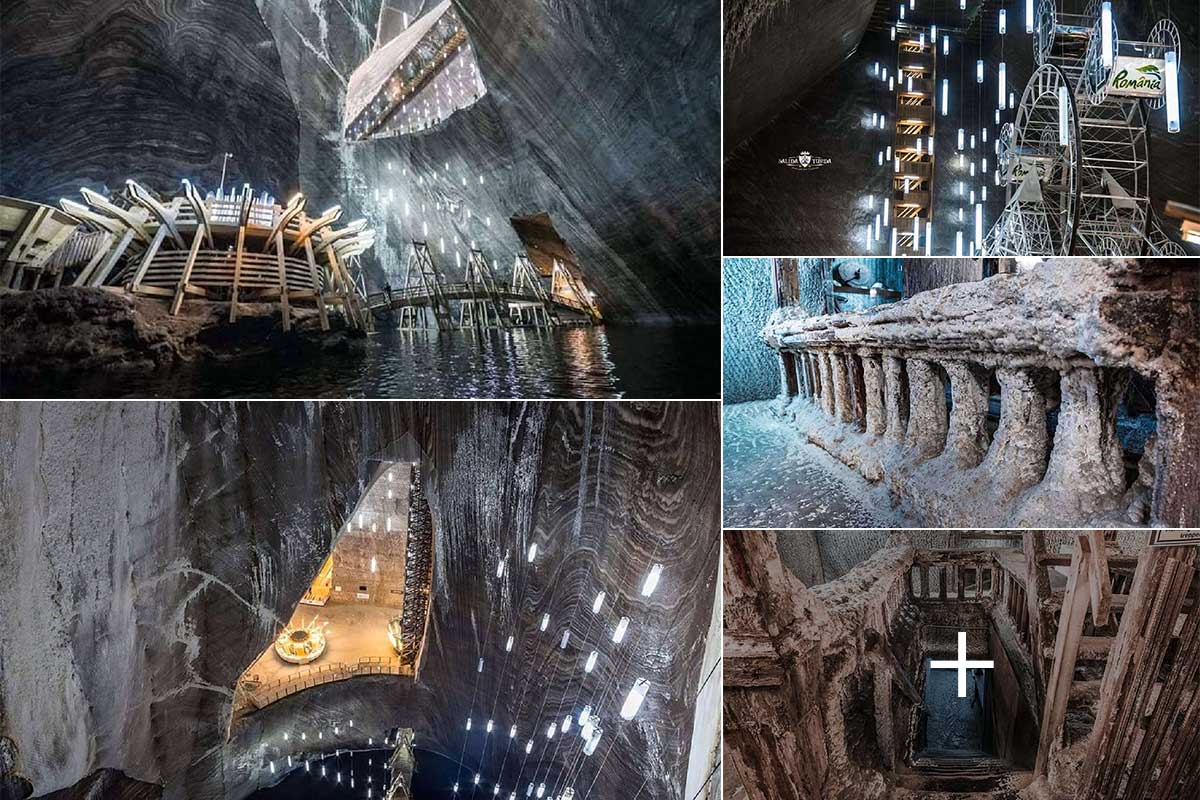
Salina Turda | Cluj county
(18 April 2025)
X

Salina Turda | Cluj county
(18 April 2025)
The Turda Salt Mine is a true museum of the history of salt mining. It is located in the city of Turda, which is in Cluj County.
The temperature in the salt mine is constantly between 10-12 degrees Celsius. It is one of the oldest and most famous salt mines in Transylvania / Romania.
https://willkommen-in-rumänien.de | https://welcome-to-romania.com
Image source: https://www.destinatiaanului.ro/
The temperature in the salt mine is constantly between 10-12 degrees Celsius. It is one of the oldest and most famous salt mines in Transylvania / Romania.
https://willkommen-in-rumänien.de | https://welcome-to-romania.com
Image source: https://www.destinatiaanului.ro/
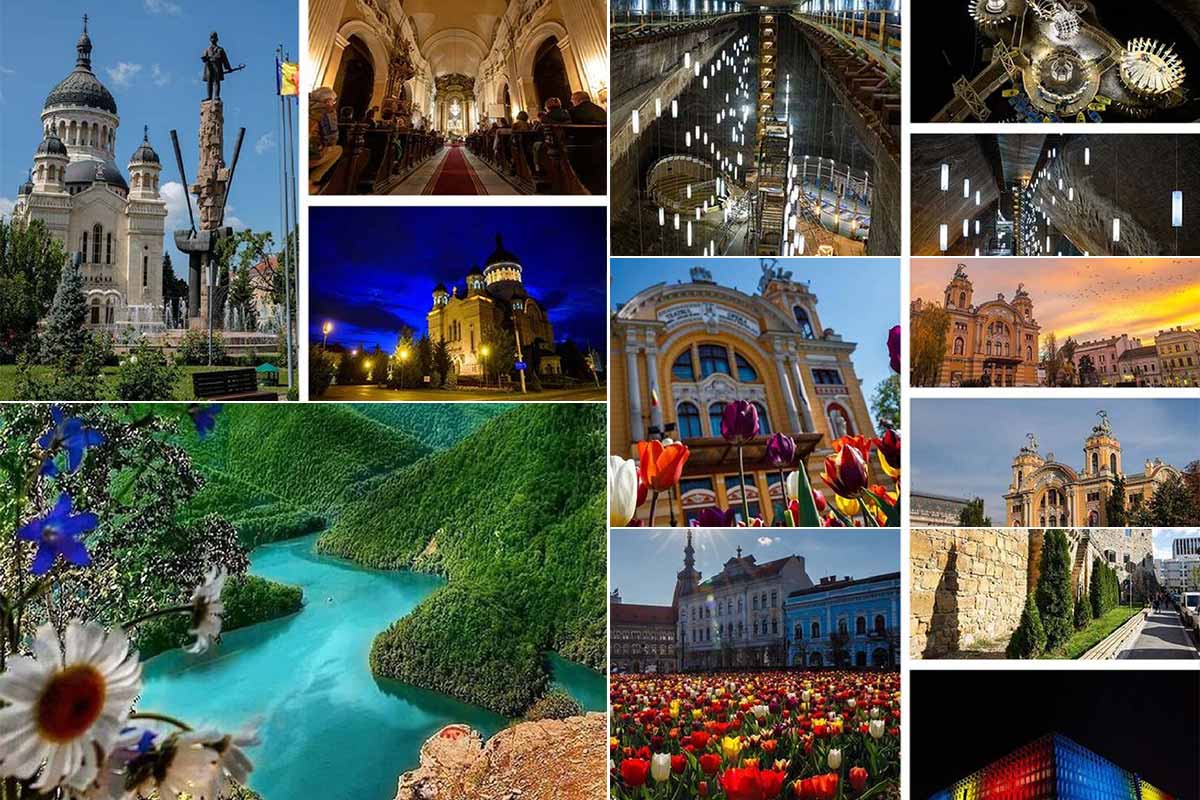
A journey | Cluj County
(12 April 2025)
X

A journey | Cluj County
(12 April 2025)
We are visiting Cluj County (county capital: Cluj-Napoca) in the northwest of Romania, with a look back at previous posts.
https://welcome-to-romania.com | https://urlaub-in-rumänien.de
We thank the photographers / Facebook groups for the permission to use these pictures.
https://welcome-to-romania.com | https://urlaub-in-rumänien.de
We thank the photographers / Facebook groups for the permission to use these pictures.
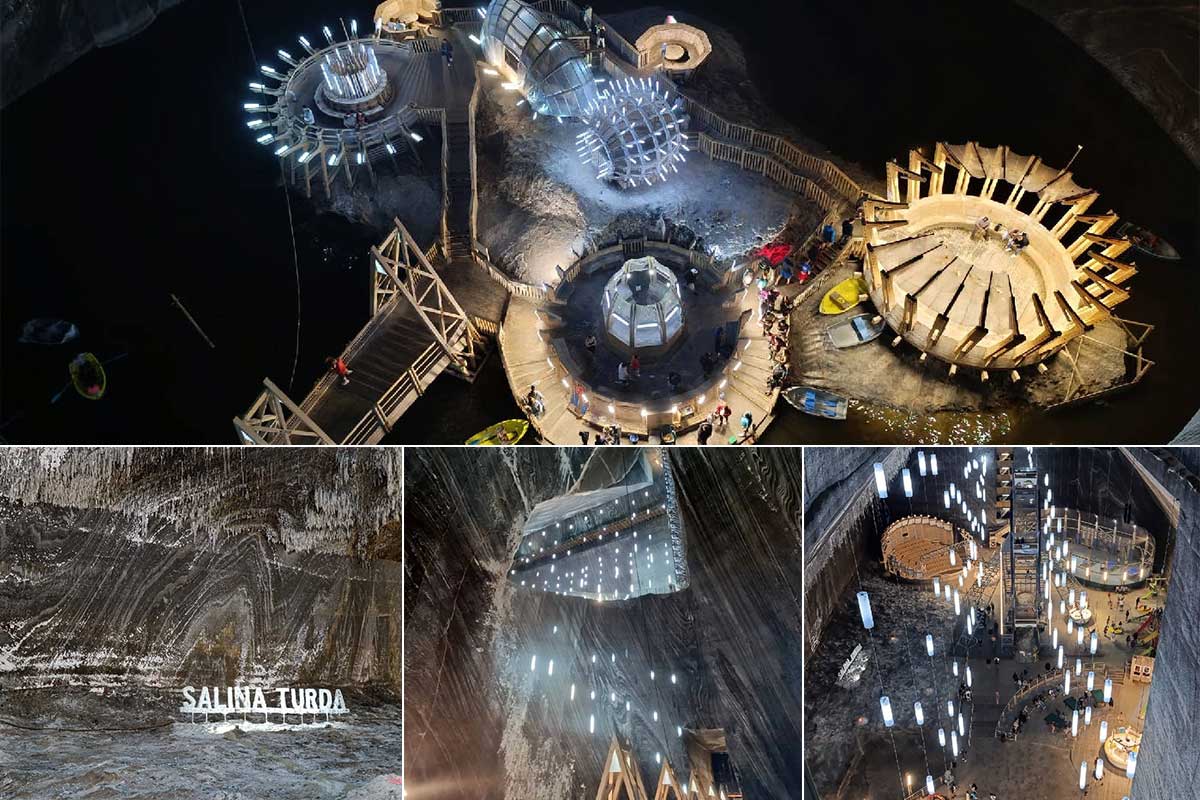
Pictures from June 2024 | Turda Salt Mine | Cluj County
(25 March 2025)
X

Pictures from June 2024 | Turda Salt Mine | Cluj County
(25 March 2025)
Freshly photographed last weekend and we are pleased to be able to show these pictures. The Turda Salt Mine is located in the town of the same name in Cluj County, southeast of the city of Cluj-Napoca.
We would like to thank Mr. Camille Feller and his wife Katja Feller for sending us these beautiful pictures and giving us permission to use them. Thank you very much!
We would like to thank Mr. Camille Feller and his wife Katja Feller for sending us these beautiful pictures and giving us permission to use them. Thank you very much!
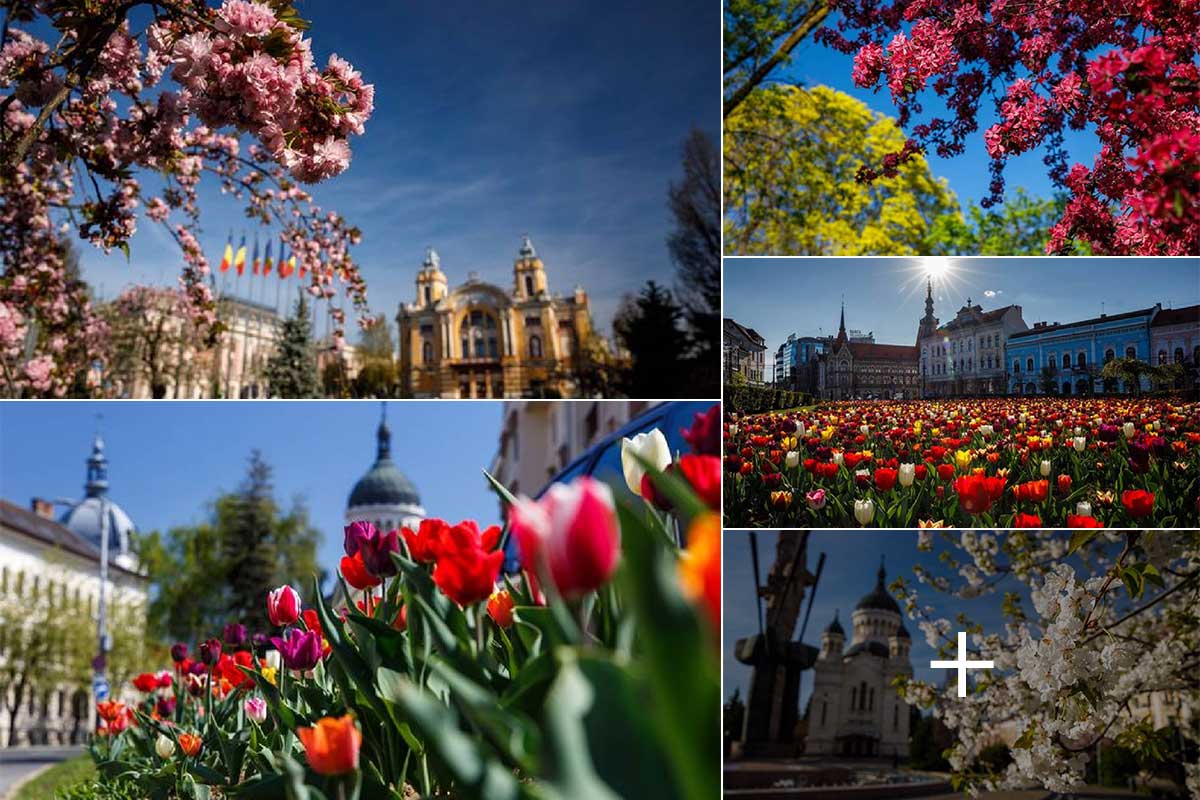
Coming soon... Cluj-Napoca in spring - a sea of flowers
(11 February 2025)

The city of Cluj-Napoca / Cluj
(03 January 2025)
X

The city of Cluj-Napoca / Cluj
(03 January 2025)
Located in the northwest of Romania and featuring an international airport, Cluj-Napoca is one of the largest cities in Romania.
The city, known in German as Klausenburg, is situated in the historical region of Transylvania and has approximately 400,000 inhabitants.
The city, known in German as Klausenburg, is situated in the historical region of Transylvania and has approximately 400,000 inhabitants.
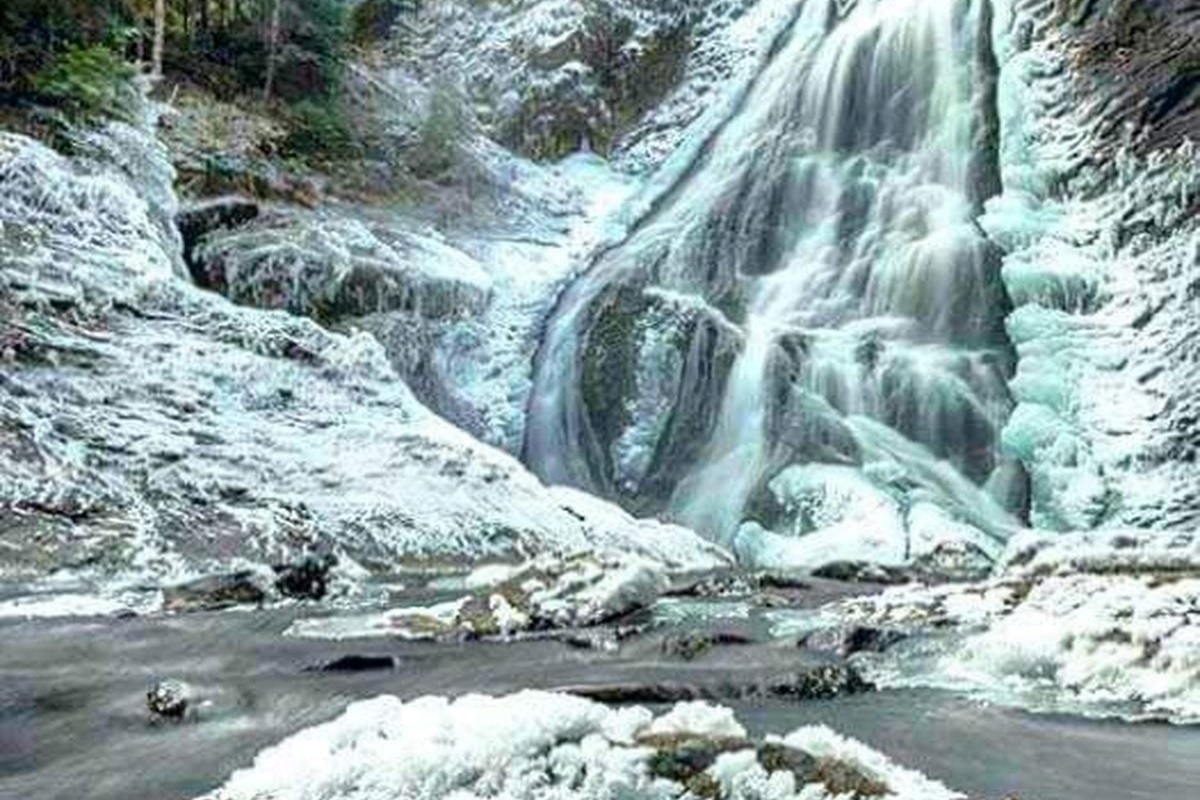
Valul Miresei Waterfall in Cluj County
(23 November 2024)
X

Valul Miresei Waterfall in Cluj County
(23 November 2024)
Pictures from winter 2021 / 2022: The Bride's Veil Waterfall (Romanian: Valul Miresei) is also known as Rachitele Waterfall and is located near the village of the same name (Rachitele), about 60 km west of Cluj-Napoca.
The waterfall is situated on the border of the Apuseni Nature Park / Mountains and is worth visiting in any season.
Learn more about Romania as a travel destination and all its regions: https://xn--urlaub-in-rumnien-2qb.de/
We thank Vlad the Impaler - Dracula for the permission to use this wonderful picture.
The waterfall is situated on the border of the Apuseni Nature Park / Mountains and is worth visiting in any season.
Learn more about Romania as a travel destination and all its regions: https://xn--urlaub-in-rumnien-2qb.de/
We thank Vlad the Impaler - Dracula for the permission to use this wonderful picture.
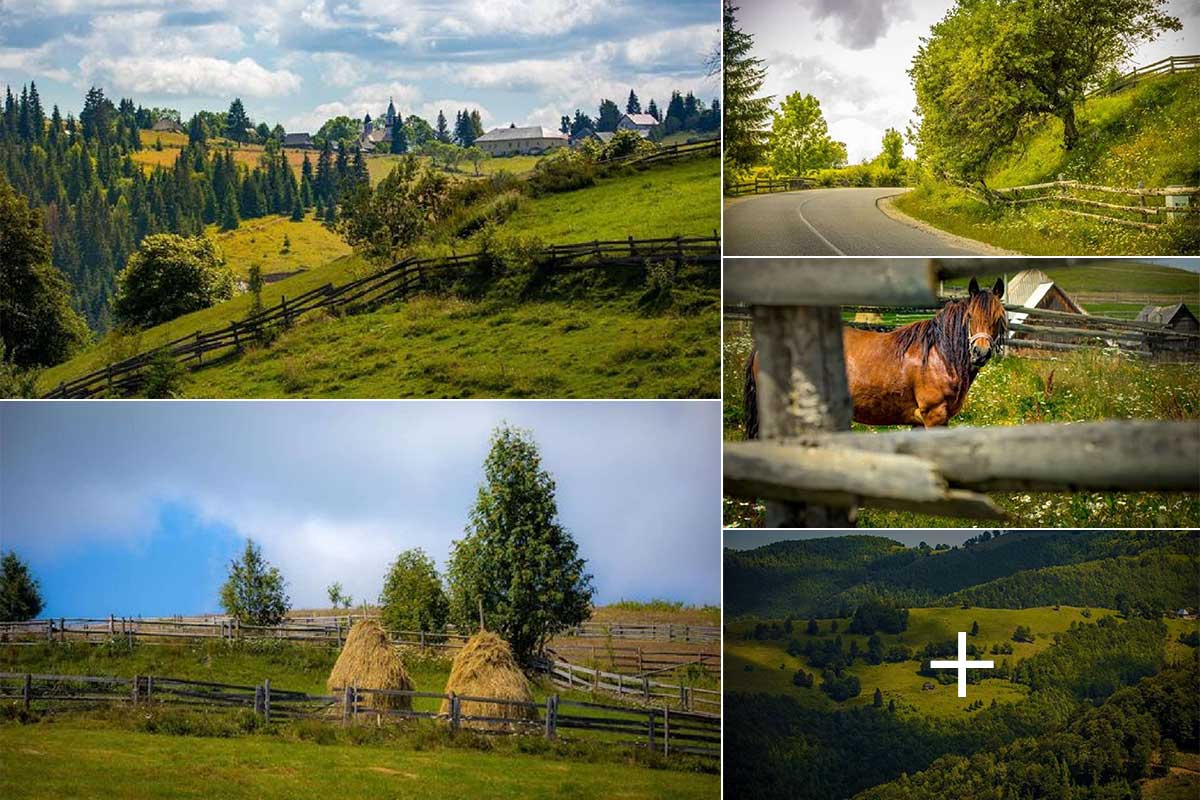
Beautiful landscapes in Cluj County
(23 November 2024)
X

Beautiful landscapes in Cluj County
(23 November 2024)
Cheile Somesului Rece National Park, near the municipalities of Maguri Racatau and Maguri-Marisel, is located west of Cluj-Napoca in northwestern Romania.
https://xn--willkommen-in-rumnien-m2b.de/ | https://welcome-to-romania.com
Learn more about Cluj-Napoca:
https://urlaub-in-rumänien.de/en/uir/destinations-romania-cluj-napoca/
We thank Mrs Farkas Ildiko ( facebook.com/farkas.ildiko.75 ) for the permission to use these pictures.
https://xn--willkommen-in-rumnien-m2b.de/ | https://welcome-to-romania.com
Learn more about Cluj-Napoca:
https://urlaub-in-rumänien.de/en/uir/destinations-romania-cluj-napoca/
We thank Mrs Farkas Ildiko ( facebook.com/farkas.ildiko.75 ) for the permission to use these pictures.

Autumn impressions in Cluj-Napoca
(16 October 2024)
X

Autumn impressions in Cluj-Napoca
(16 October 2024)
The villages of Maguri-Racatau, Marisel, Maguri, and the Tarnita Reservoir in Cluj County provide us with a glimpse of the enchanting autumn in Romania.
The lake has an area of 215 hectares, a length of almost 9 km, a maximum water depth of 70 meters, and is a popular destination for tourists and residents of the city of Cluj-Napoca.
We thank Mrs. Farkas Ildiko (facebook.com/farkas.ildiko.75) for her permission to use these beautiful pictures.
The lake has an area of 215 hectares, a length of almost 9 km, a maximum water depth of 70 meters, and is a popular destination for tourists and residents of the city of Cluj-Napoca.
We thank Mrs. Farkas Ildiko (facebook.com/farkas.ildiko.75) for her permission to use these beautiful pictures.

Buscat Ski Region / Ski Resort | Cluj County
(03 October 2024)

Cluj-Napoca (in German: Klausenburg)
(16 September 2024)
X

Cluj-Napoca (in German: Klausenburg)
(16 September 2024)
Located in the north-west of Romania and with an international airport, Cluj-Napoca is (probably) the second largest city in Romania after Bucharest.
The city of Cluj-Napoca is located in the historical region of Transylvania and has approximately 350,000 to 450,000 inhabitants (depending on the definition of the catchment area and current research, as far as possible).
The city of Cluj-Napoca is located in the historical region of Transylvania and has approximately 350,000 to 450,000 inhabitants (depending on the definition of the catchment area and current research, as far as possible).
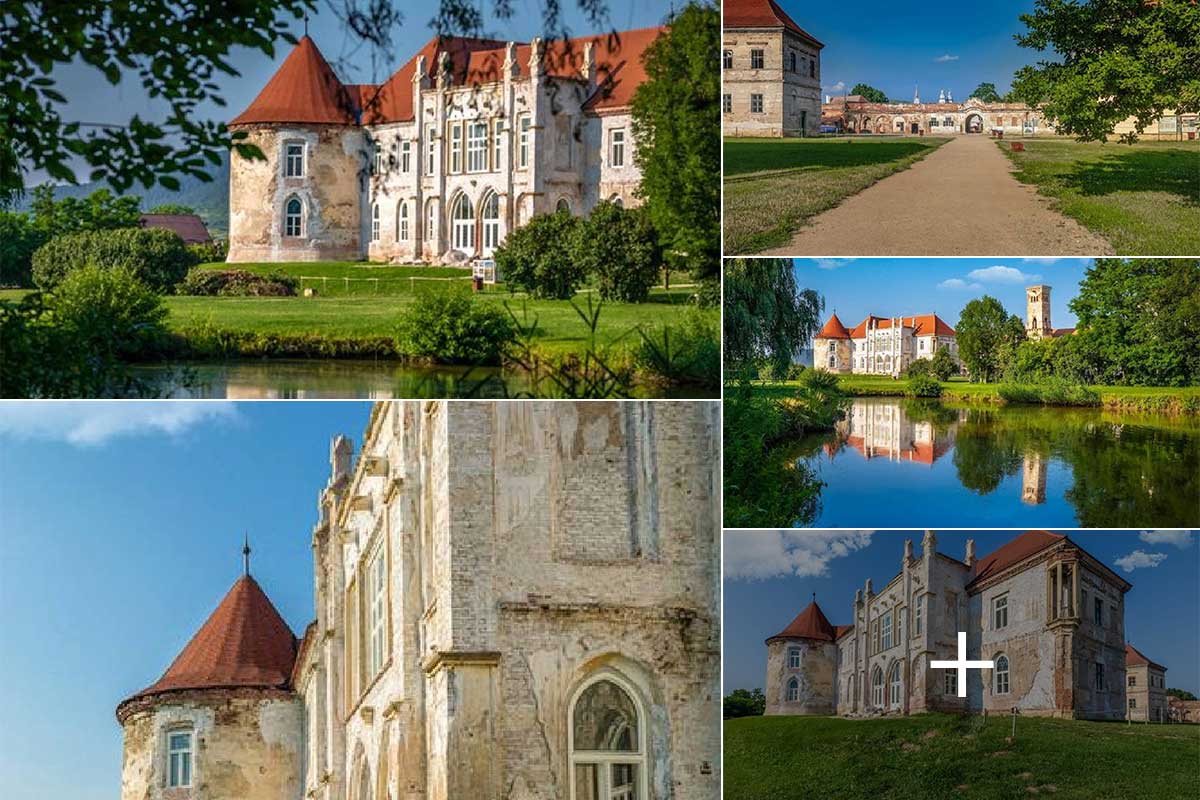
Banffy Castle in Bonțida | Cluj County
(12 July 2024)
X

Banffy Castle in Bonțida | Cluj County
(12 July 2024)
Banffy Castle in the municipality of Bonțida ( Hungarian: Bonchidai Banffy-kastély ) is known as Versailles in Transylvania and is an architectural style ensemble built by the Banffy family in the municipality of Bontida, Cluj County.
The nucleus of the building complex reflects the Renaissance, subsequent additions and conversions took place in the eighteenth century. 18th century in Baroque style and 19th century in classicist and romantic style ( neo-Gothic gallery from 1855 ).
The nucleus of the building complex reflects the Renaissance, subsequent additions and conversions took place in the eighteenth century. 18th century in Baroque style and 19th century in classicist and romantic style ( neo-Gothic gallery from 1855 ).
We thank Farkas Ildiko for the permission to use this image(s)
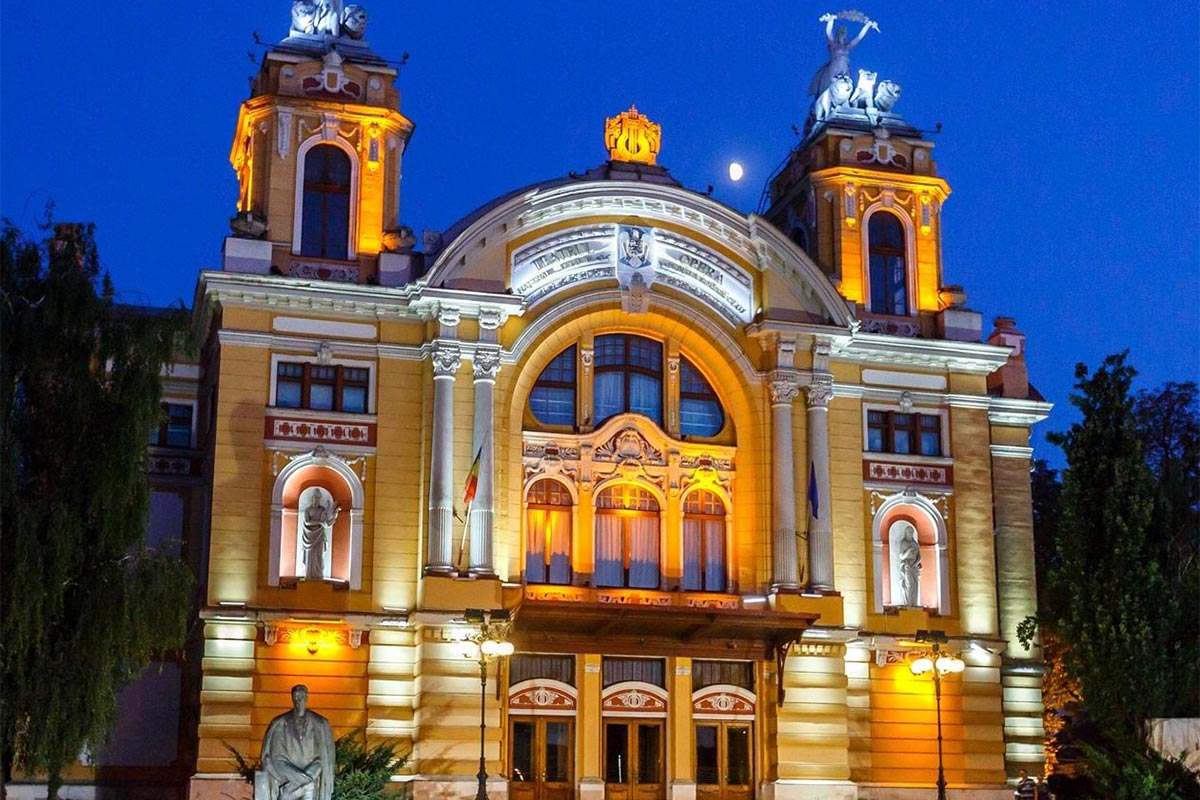
Lucian Blaga National Theater in Cluj-Napoca
(29 May 2024)
X

Lucian Blaga National Theater in Cluj-Napoca
(29 May 2024)
Find out more about Cluj-Napoca (German / Romanian):
RO: https: // xn --urlaub-in-rumnien-2qb.de/ro/uir/de-vizitat-orase-cluj-napoca/
D: https: // xn-- urlaub-in-rumnien-2qb.de/de/uir/ausflugsziele-staedte-cluj-napoca/
RO: https: // xn --urlaub-in-rumnien-2qb.de/ro/uir/de-vizitat-orase-cluj-napoca/
D: https: // xn-- urlaub-in-rumnien-2qb.de/de/uir/ausflugsziele-staedte-cluj-napoca/
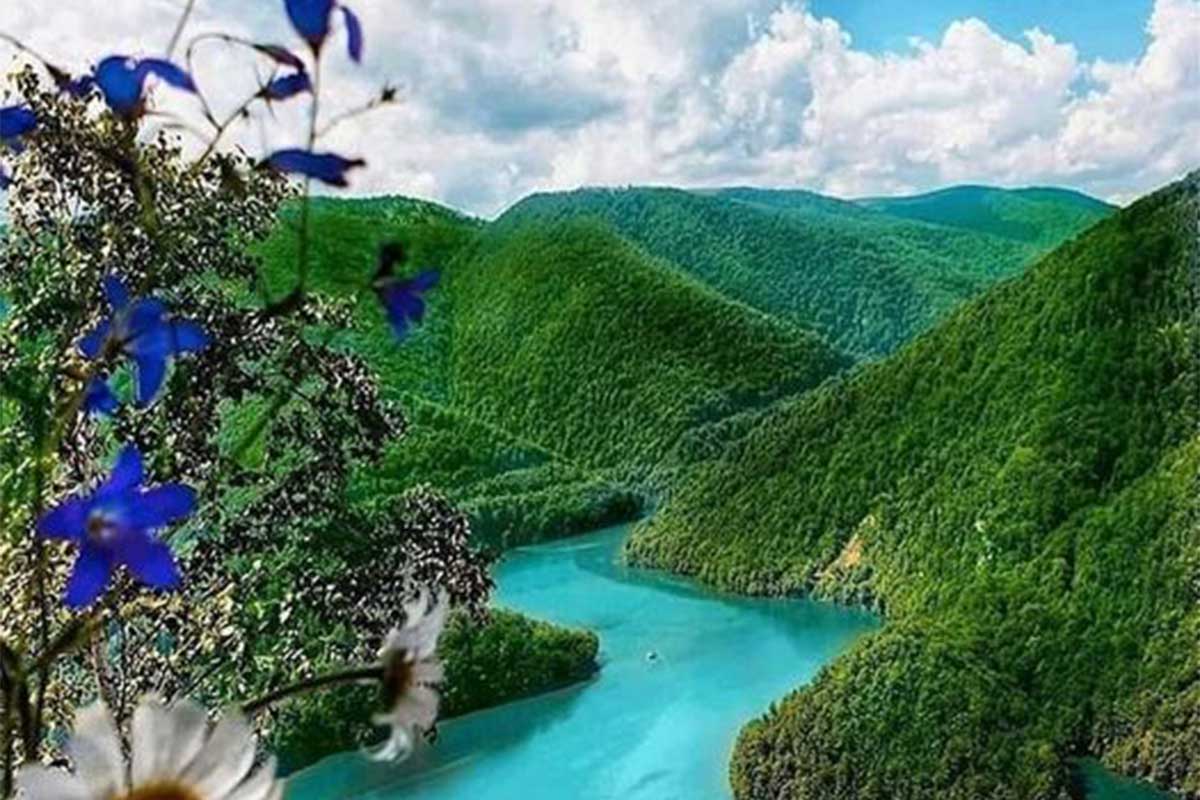
Tarnita Lake in Cluj County
(12 March 2024)
X

Tarnita Lake in Cluj County
(12 March 2024)
Lake Tarnita is a reservoir between the municipalities of Rasca, Marisel and Gilau west of Cluj-Napoca.
It has an area of approximately 215 ha, a length of almost 9 km and a depth of up to 70 meters.
It has an area of approximately 215 ha, a length of almost 9 km and a depth of up to 70 meters.
We thank Vlad the Impaler - Dracula for the permission to use this image(s)
